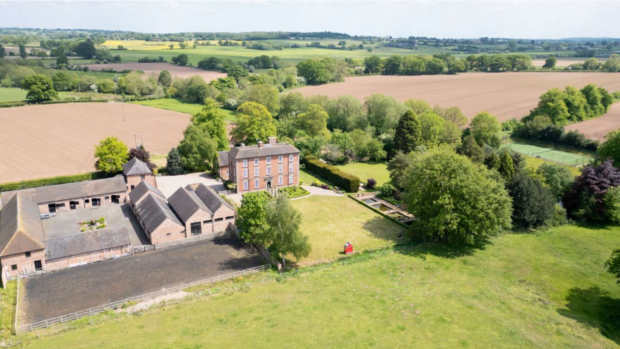A house so dirty that “you wiped your feet on the way out” is etched indelibly on the mind of the equestrian estate agent who was instructed to sell it. And if the state of the place has the agent recoiling in horror, buyers are guaranteed to run away faster than it takes to say “all offers accepted”.
A worn property sells slowly — if at all — and the messier it is, the lower the offer it will attract. Alas, “the synergy between equestrian home owners and the correct presentation of their property can sometimes be missing,” says Chris Yates of Bradleys Marine and Country.
A well-presented house needn’t be show-home perfect, but it helps if buyers don’t have to pass muck to access the stables or climb over dirty laundry to view the master bedroom.
“Six months’ worth of manure on the yard and stables that have not been mucked out on the day of a viewing are definitely a turn off when applicants come to view,” says Guy Sherratt.
Tidying up home and facilities is the first step to an easy sale. Jo Wild, a “house doctor” specialising in country and equestrian houses, recommends “simple things that don’t have to cost a fortune” to spruce up the interiors.
“Clear any junk and leave rooms that suggest a lifestyle but are not cluttered with personal objects, so people can imagine themselves and their family in that home,” she says. “Make sure lights are on and beds are freshly made and, even on cold days, ensure the house is well ventilated.”
It is also worth improving a property’s kerb appeal — how it looks from the outside. “Kerb appeal is everything,” says Wild. “Make sure the lawn is mowed and the bushes are tidy. You don’t want [prospective buyers] to drive by and say ‘oh, dear’.”
But showing off stables and yard at their best should come just as high in the priorities of equestrian sellers.
“Where the equestrian facilities are a main feature of a property, it’s important to present them at their best by clearing weeds from stable yards, repairing and repainting stabling and cutting overgrown fields,” says David Rumsey of Pelhams.
“The first impression a yard should give is that it looks as professional as possible,” agrees Simon Harrison of Durrants, who recommends getting timberwork in good order and cleaning the yard. “Try to eliminate mud, tidy muckheaps and organise the tack, feed and barn areas.”
It is worth fixing any minor glitches that are likely to attract the critical eye of a buyer. A quick makeover can make yards more attractive if some gravel is spread over old surfaces.
“Where possible, boxes should be steam cleaned and any damaged timber replaced. A lick of paint will always make a dramatic difference if the yard is looking tired,” recommends Sara Stephens of Churchill Country & Equestrian.
Tidying up fencing is crucial, as “broken rails can create the impression that more money needs to be spent, and may attract lower offers,” says Zoe Napier of Walkers Country & Equestrian.
Yates agrees that “stock-proof fencing and the eradication of any barbed wire go a long way to building buyer confidence”.
When the house is tidy, the lawn mowed and the stables clean, Wild urges vendors to make themselves available at viewings and tell buyers all they need to know about local bridleways, vets and equestrian suppliers — down to “who takes away the muckheap”. It costs nothing but, she says, it will definitely help clinch the sale.
|
||
 |
||


 Get up to 19 issues FREE
Get up to 19 issues FREE TO SUBSCRIBE
TO SUBSCRIBE 


